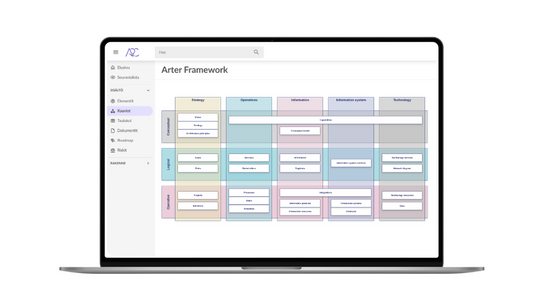
Blog
-
 Published on:
Published on: -
 Published on:
Published on:Documenting processes with The 3-page technique
-
 Published on:
Published on:What is quality management with IMS software?
-
-
 Published on:
Published on:Managing enterprise architecture with ARC software
-
-
-
 Published on:
Published on:Arter appoints Mika Tarhala as new Managing Director
-